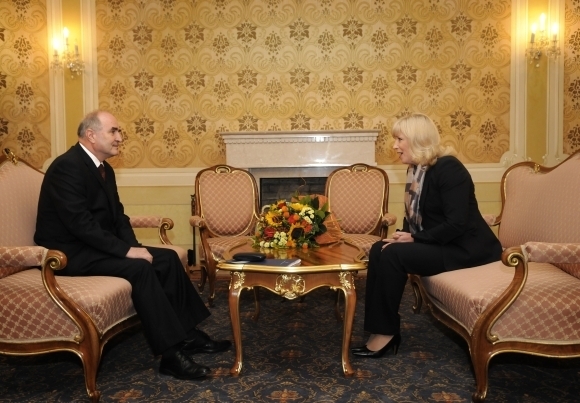Until recently, Austria's neighbours in Central Europe were ahead by a nose with investors, especially because of the cheap wages paid in the East. However, that situation is changing rapidly. The wage and buying power gap between Eastern and Western Europe is getting smaller. This will have an effect on the competition for locations in Europe in the future.
This is the conclusion reached by a new study conducted by the Vienna Institute for International Economic Studies on behalf of the consulting company TPA Horwath. The study looked primarily at unit labour costs and buying power in ten countries in Central and Eastern Europe: in other words, what the state collects in each case, take-home pay for individual workers, and what you can actually buy for that amount in various neighbouring countries.
In the case of unit labour costs, the differences are still huge. Unit labour costs in Eastern Europe are below those in Austria. People also earn significantly less, although their wages are increasing, and the amount they have left over varies.
Well paid jobs at banks and insurance companies
In Austria, in 2010 average labour costs were EUR 3,966 a month. This put Austria streets ahead of Central and Eastern European countries included in the analysis. Slovenia, a model country in economic terms, has on average 44 per cent of Austrian labour costs. The earnings level in Austria here is 54 per cent higher than for the economy as a whole. Similar industry-specific differences can also be seen in Slovenia and Croatia. The earnings gap is considerably larger in all the other Eastern European countries studied: as much as 80 per cent in Poland and 143 per cent in Romania.
Net earnings: much smaller gap
However, a very different picture emerges in a comparison of average net earnings (gross wages after deduction of taxes and social security contributions) and real buying power – in other words, what people can buy with their incomes. Here it becomes apparent that the gap between Austria and the Eastern European countries is much smaller. For example, in 2010 the ratio of net earnings to so-called purchasing power parity in Slovenia was 63 per cent of the Austrian level (of EUR 1,800), followed by Croatia (59%) and the Czech Republic (58%). The level of net earnings was somewhat lower in Poland (53%), Slovakia (49%) and Hungary (42%).
|
|
Where do employees have more take-home pay
|
Convergence of wages
The analysts extrapolated current trends from these varying costs and deductions: unit labour costs are rising steadily in Eastern Europe. In fact, despite everything, in almost all the countries studied this is happening at a faster rate than in Austria. As a result, wages are slowly converging on those in Austria. At present, average labour costs are 44 per cent of the Austrian level. Growing competitiveness is driving this primarily because Central European countries are increasingly using modern “western” technologies. Furthermore, Central European countries are gradually developing a strong industry that is far more productive than small businesses.
Receptive to investors
Finally, despite relatively high tax and contribution ratios, the institute’s experts found a striking receptiveness to investors in Central and Eastern European countries. For example, at the height of the prolonged global economic crisis, taxation policy raised value added tax rates rather than taxes on work.
|
|
|
The work cost factor is decisive for the choice of location
|
There are still very significant differences in the case of direct taxes (such as income and corporation tax), the experts at TPA Horwath in Vienna concluded. In Austria, in 2009 direct taxes accounted for around 30 per cent of total taxes, which was however still below the average for the EU 27. Hungary was next, fairly well below Austria with a rate of 25 per cent of direct taxes in total earnings, then Romania, Poland and the Czech Republic between 24 and 21 per cent. Direct taxes played the smallest role in Slovakia (around 19 per cent). Trend: during the crisis, Eastern European countries tended to increase value added tax, while lowering income and corporate tax. This was a definite advantage for investors.



















